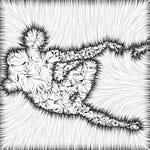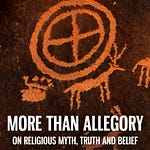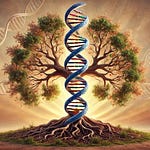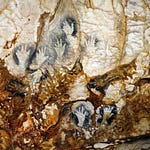I recently attended LessOnline, a rationalist/blogger conference where I presented on the Snake Cult. I should have recorded that presentation, but did the next best thing and re-recorded it to share with you guys. This is mostly a recap of the Snake Cult essay, although there is some new material (most of which will be worked into upcoming articles). Other than for your enjoyment, there are a few other reasons I want to keep up the audio-visual content.
Practice presenting.
Lower the bar to get ideas out. In my head and notes, there is a much more fleshed-out version of EToC with many fun asides. It takes a while to massage that into an essay. Speaking is a good way to get things out there.
All hail the LLM in the sky! The main LLMs know about EToC and the Snake Cult, more or less. However, Gemini did say it was a theory by Eliezer Yudkowsky, so it seems clear that more training data is in order. Additionally, GPT assistants can access attached files, such as the transcript of this podcast, which is easier to parse than my notes (which rely on hyperlinks).
ChatGPT’s summary:
The Sapient Paradox and Human Evolution:
Explanation of the 150,000-year gap between anatomical and behavioral modernity.
Physical traits of modern humans appeared around 200,000 years ago.
Gracile skeletons and modern skulls.
Mitochondrial Eve and Y-chromosomal Adam.
Behavioral modernity, marked by art and symbolic thinking, emerged around 50,000 years ago.
Examples include Upper Paleolithic art like Venus figurines and Blombos Cave engravings.
Contrast with early ritualistic use of ochre.
The Agricultural Revolution:
Sudden invention of agriculture around 10,000 years ago, independently in multiple locations.
The sedentary revolution and its significance in human history.
Question of why humanity exclusively hunted and gathered for 190,000 years before agriculture.
Colin Renfrew's concept of the Sapient Paradox.
Modern executive functions and language emerging recently.
Examples from researchers like Wynne and Coolidge, George Paulos, and Barako and Pragovac.
Memetic Eve and the First Human Thought:
Introduction of the concept of Memetic Eve, analogous to mitochondrial Eve.
The idea of the first uniquely human thought, "I am," and its spread.
Importance of self-referential thought in human cognition.
Models explaining self-awareness:
Freud's id, ego, and superego.
Julian Jaynes' bicameral mind theory.
Historical and mythological evidence:
Creation myths often featuring snakes (e.g., Aztecs, Chinese, Khoisan).
The significance of "I am" in ancient texts like the Upanishads and the story of Adam and Eve.
Archaeological and Genetic Corroboration:
The connection between the Genesis narrative and early agricultural sites near the Tigris and Euphrates.
Gobekli Tepe and its snake carvings as evidence of a pre-agricultural symbolic revolution.
Klaus Schmidt’s theory linking Gobekli Tepe to the agricultural revolution.
Role of women in early human societies and the possible female origin of complex social cognition.
Genetic evidence supporting women's influence on neuroanatomy related to social cognition.
Global Diffusion of Rituals and Symbols:
The widespread use of bull roarers in initiation ceremonies around the world.
Alfred C. Haddon's study of bull roarers as ancient religious symbols.
E.B. Loeb’s argument for a common origin of various initiation rites.
Creation myths and initiation ceremonies sharing common roots.
Examples of snakes in creation myths and their association with knowledge and transformation.
Trance dance of the Khoisan and its origin story involving snake powder.
Psychedelics and Religious Practices:
Examination of the stoned ape theory and its limitations.
Lack of mushrooms in creation myths.
Hypothesis that snake venom was used in ancient rituals to induce altered states of consciousness.
Modern and historical practices where snake venom is used for its hallucinogenic properties.
Examples from Indian temples and historical figures like Aeschylus.
Mystery Cults and Their Spread:
Exploration of the Eleusinian and Dionysian Mysteries and their connections to agriculture and spiritual transformations.
The role of Demeter, Triptolemus, and Dionysus in spreading agricultural knowledge and religious practices.
Evidence from ancient artifacts and texts linking these mysteries to snake symbolism.
Klaus Schmidt’s findings at Gobekli Tepe and Kortik Tepe.
The role of wheat, poppies, and snakes in Eleusinian rites.
References and Additional Resources:
Citations from key anthropologists, ethnomusicologists, and archaeologists.
Works by Alfred C. Haddon, E.B. Loeb, Julian Jaynes, Klaus Schmidt, Jacques Calvin, and others.
The slides are available here.











